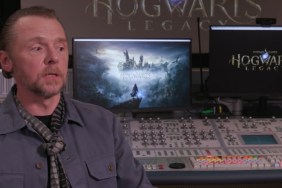Rule 12 of the Wakamono no Kokoroe for Young Yakuza…
…If you have a fight or dispute with someone from another gang, if that person is wrong, never back down, even if they are tougher or in a higher position than you.
[image1]Most gamers don't care about game reviews. Not you, of course, since you're reading this, but there is a particular crowd of forumites and naysayers who dismiss reviews and choose to make up their own mind. While it certainly makes my job less meaningful, I really can't blame them, especially when you look at the scores on GameRankings for a game like Yakuza 4 and notice scores evenly spread from a low 6.5 from IGN to a 9.2 from Digital Chumps.
Most of the time, an erratic range like this can be swept beneath the excuse of "well, that's just their opinion", except there is a fundamental problem: There is a difference between an opinion and an argument. A review doesn't mean anything if it's just a blithering of opinions unsupported by solid evidence and analysis, which I must note before I say that some game reviewers are wrong. Of course, a certain degree of subjectivity is allowed, but some critics take this much too far, severely underrating Yakuza 4 and the series in general.
The first and most irritating point they make is how Yakuza 4's story is convoluted and difficult to follow. This is complete nonsense. The Yakuza series, through its mainstay protagonist Kazuma Kiryu, has a consistent theme of the necessity of bringing balance between perception and truth, of showing the honor and strength of the often-maligned yakuza. Yes, this may be fiction, but as one real-life yakuza said about Yakuza 3, "Kiryu is the way yakuza used to be."
In Yakuza 4, this theme is placed on the shoulders of Kiryu and three new characters – the loan shark Shun Akiyama, the yakuza hitman Taiga Saejima, and the dirty cop Masayoshi Tanimura – all of whom might seem like shady characters but whose intentions are actually noble. The player goes through each protagonist's part in the story chronologically one at a time, each revealing a part of the corruption and power struggle stirring between the police force and the various yakuza families in the Tojo clan. This interwoven plot structure, reminiscent of Suikoden III's which stars a trio of protagonists, is one of the most daring and often unexplored concepts in video games today.
[image2]Though there could be more side missions tying the four characters together, the cut-scenes are carefully crafted with intriguing dialogue and multi-dimensional characters. Some of the plot twists might not be terribly surprising for fans of the series, but the script and cinematic shots are superb and intricate enough to carry the diverse weight of four perspectives. The suspense derives from the player wanting to know how these four strangers – and one mysterious woman – are connected, and by the finale, it becomes more of a wonder how these four protagonists were somehow strangers all this time.
Critics might complain that there are too many characters and that comprehending each relationship is difficult, but Yakuza 4's story is not as complicated as those of Metal Gear Solid, Heavy Rain, and The Joy Luck Club. We're talking about a high-school reading level here at best. And in case players need more time to absorb what's going on, Yakuza 4 has a movie gallery including every cut-scene in the game as well as significant plot points in the first three Yakuza games. Anyone who doesn't understand the story simply needs to put in more effort.
In fact, if the plot does deserve criticism, it's for not making character selection more intricate. Having to complete all of one protagonist's story before moving to the next makes players feel like they're restarting the game three times over, building a character from level 1 up to level 20 all over again while trying to comprehend and incorporate a new piece of the plot into the overarching story. By the time the player reaches the fourth storyline with Kazuma Kiryu, it takes a bit of effort to remember Shun Akiyama's role in the larger scheme of things without having to replay Akiyama's cut-scenes. It's also not until the finale chapter that the player can choose among the four characters freely for clearing side quests. Revising the concept of the plot by allowing the player to choose the pace and the protagonist, like in Suikoden III, would have been a good idea.
[image3]Some might also contend that Yakuza 4 is too Japanese, with mini-games like Japanese-style mahjong and shogi, a city full of unusual street names and hostess bars, and the overall Japanese subtexts and idiosyncrasies that foreigners may not understand. Even the dialogue in cut-scenes is all voiced in Japanese with English subtitles, but to offer a counterpoint, that's how it's supposed to be. People who watch a Japanese animation with English dubbing are usually doing it wrong, and much would be lost in translation if Yakuza 4 was forced to synchronize English voice-overs to each character's mouths.
Not understanding that the game's fictional city of Kamurocho looks, sounds, and feels like Kabukicho in the real world is like Americans complaining that there is no egg foo young in Beijing. Yes, it's weird to foreigners, but that's Japan and that's what makes it awesome. This is the right kind of authenticity in gaming.
It's understandable that the lack of a waypoint system can make it difficult to navigate the streets, but it doesn't take long exploring the city for side quests, locker keys, and the occasional mini-game to learn the layout of Kamurocho (and looking at the maps provided a few times). Nowadays, every game has some GPS navigation system that requires players to know diddly-squat about how they're actually getting somewhere. Instead, by the end of Yakuza 4, players will actually gain a sense of direction and know Kamurocho like the back of their hand. And that includes the newly added rooftops, underground mall, and central parking lot, which all add a vertical dimension to what was largely a flat world.
Of course, all this talk about the story and authencity flies in the face of what Yakuza 4 is really about: beating an obnoxious punk to the ground and stepping on his face until he cries mommy and coughs up a few thousand yen as a fee for your beatdown therapy. These tongue-in-cheek random battles occur no matter which character you choose, though there are more than several differences between the protagonists. As a tough convict, Saejima can barrel through enemies with sheer power but must roam the sewers and rooftops to avoid being spotted by cops. The fresh-faced Tanimura lacks brawn and constitution but makes up for it with a longer heat gauge for finishers and the perception to parry almost any attack. Akiyama and Kiryu have the most balanced fighting styles, the former with taekwondo flurry kicks and the latter with sharp, precise strikes and takedowns. These distinct playstyles not only add much needed variety to the Yakuza series, but also reflect the personality of their respective practitioners.
[image4]Some might squawk about how the combat is too repetitive and simple, but those comments can be swiped aside by simply moving the difficulty to Hard (or Ex-Hard after unlocking it) and noting that the fighting system remains satisfying throughout the game. Each character can learn additional abilities and moves by training, leveling up, and taking snapshots of hilarious outtakes in the city for Revelations. If players get tired of the grind, they will probably be hooked on at least two or three side distractions: shogi, mahjong, bowling, table tennis, karaoke, batting practice, weapons modification, the underground fighting coliseum, casino games, traditional Japanese gambling, the Sega arcade, golf, locker keys, billiards, darts, fishing, and (the return of) host clubs. That's not even mentioning the 50+ general side quests and the rewards going into Premium New Game. (Whew!)
I'm not certain why Yakuza 4 receives such a mixed reaction when it's such a strong overall package. Maybe it's the assumption that beat-'em-up games are only suitable as arcade titles and are automatically inferior to more intense shooters and more technical fighting games. Maybe it's that people rush to compare Yakuza to Grand Theft Auto and Saints Row because they seem similar, though Yakuza is not open world nor about being free to cause destruction. Maybe's it's just too foreign for the Western world; that being a Japanophile is somehow a requirement. Whatever the case may be, this is one critic who can see through the bullshit and has his name down in blood for Yakuza 5.
-
Complex plot and protagonists
-
...though the linearity feels choppy
-
Satisfying combat system
-
Solid cut-scenes and city graphics
-
Tons of mini-games and strong replay
-
Variety of fighting styles
-
Interaction between protagonists could have been deeper
-
Largely reused assets from Yakuza 3









